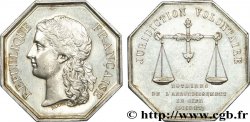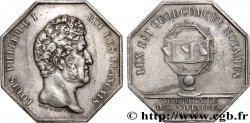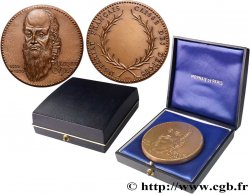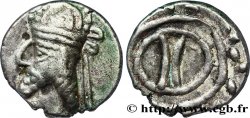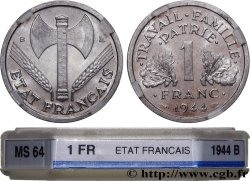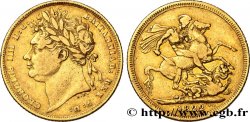Usted debe firmar y ser un comprador aprobado para pujar, Inicia sesión para pujar. Las cuentas están sujetas a la aprobación y el proceso de aprobación se alcanzan dentro de las 48 horas. No espere hasta el día en una venta se cierra el registro.Al hacer una oferta en este artículo usted está firmando un contrato jurídicamente vinculante para comprar este artículo y haga clic en «oferta» constituye una aceptación de los términos de uso de live auctions de cgb.fr.
La subasta debe ser colocado en euros enteros cantidades venta only.The se cerrará en el momento en la descripción del artículo, no se ejecutarán las ofertas recibidas en el sitio después de la hora de cierre. Veces Transmition pueden variar y las ofertas pueden ser rechazadas si espera a los últimos segundos. Para más información envie el FAQ Live auction.
Las ofertas ganadoras estarán sometidas a un 18% IVA incluido por gastos de participación a la venta.
Las ofertas ganadoras estarán sometidas a un 18% IVA incluido por gastos de participación a la venta.
| Valoración : | 450 € |
| Precio : | 100 € |
| Oferta más alta : | 100 € |
| Fecha de fin de la venta : | 10 diciembre 2024 17:56:46 |
| participantes : | 1 participante |
Tipo : Notaires de Château-Thierry
Fecha: 1806
Metal: plata
Diámetro: 32,50 mm
Eje de acuñación: 12 h.
Peso: 11,98 g.
Canto: cannelée
Grado de rareza: R2
N° en los catálogos de referencia :
Anverso
Titulatura del anverso: MRS LES NOTRES DE L'ARROND. DE CHATEAU - THIERRY.
Descripción del anverso: Armes royales couronnées sur main de justice et sceptre fleurdelisé croisés, entourées des colliers des Ordres et enveloppées du manteau royal. Signé Tiolier.
Reverso
Titulatura del reverso: LEX EST QUODCUMQUE NOTAMUS ; À L'EXERGUE : 1806.
Descripción del reverso: Le gnomon avec portrait impérial difformé.
Comentario
On doit noter, et il est bien visible sur cet exemplaire, que la boule qui surmonte le gnomon portait un portrait de l’empereur qui a été difformé dans le coin. Ce détail aura généralement échappé aux contemporains comme il a échappé à Maître Lerouge, puisqu’il existe deux modèles du jeton pour la Restauration, avec le portrait de l’empereur et le coin modifié pour l’oblitérer.
On peut supposer que la première distribution de jetons se fit avec le revers “au portrait”, que cette incongruité - sous la Restauration - fut remarquée et que les distributions suivantes se firent avec des jetons frappés avec un coin apuré.
La devise "Lex est quodcumque notamus" est une création du père Ménestrier en 1686 pour les secrétaires du roi qui ne s'en sont jamais servi. L'invention fut reprise par les notaires de Paris puis ensuite par les notaires de Province.
It should be noted, and it is clearly visible on this example, that the ball surmounting the gnomon bore a portrait of the emperor that was deformed in the corner. This detail will generally have escaped contemporaries as it escaped Maître Lerouge, since there are two models of the token for the Restoration, with the portrait of the emperor and the die modified to obliterate it. We can assume that the first distribution of tokens was made with the reverse “with the portrait”, that this incongruity - under the Restoration - was noticed and that the following distributions were made with tokens struck with a purified die. The motto \\\"Lex est quodcumque notamus\\\" was a creation of Father Ménestrier in 1686 for the king's secretaries who never used it. The invention was taken up by the notaries of Paris and then by the notaries of the Province
On peut supposer que la première distribution de jetons se fit avec le revers “au portrait”, que cette incongruité - sous la Restauration - fut remarquée et que les distributions suivantes se firent avec des jetons frappés avec un coin apuré.
La devise "Lex est quodcumque notamus" est une création du père Ménestrier en 1686 pour les secrétaires du roi qui ne s'en sont jamais servi. L'invention fut reprise par les notaires de Paris puis ensuite par les notaires de Province.
It should be noted, and it is clearly visible on this example, that the ball surmounting the gnomon bore a portrait of the emperor that was deformed in the corner. This detail will generally have escaped contemporaries as it escaped Maître Lerouge, since there are two models of the token for the Restoration, with the portrait of the emperor and the die modified to obliterate it. We can assume that the first distribution of tokens was made with the reverse “with the portrait”, that this incongruity - under the Restoration - was noticed and that the following distributions were made with tokens struck with a purified die. The motto \\\"Lex est quodcumque notamus\\\" was a creation of Father Ménestrier in 1686 for the king's secretaries who never used it. The invention was taken up by the notaries of Paris and then by the notaries of the Province








 Informar de un error
Informar de un error Imprimir la página
Imprimir la página Comparte mi selección
Comparte mi selección Haz una pregunta
Haz una pregunta Consignar / vender
Consignar / vender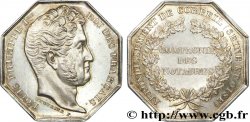
 Descriptivo
Descriptivo
